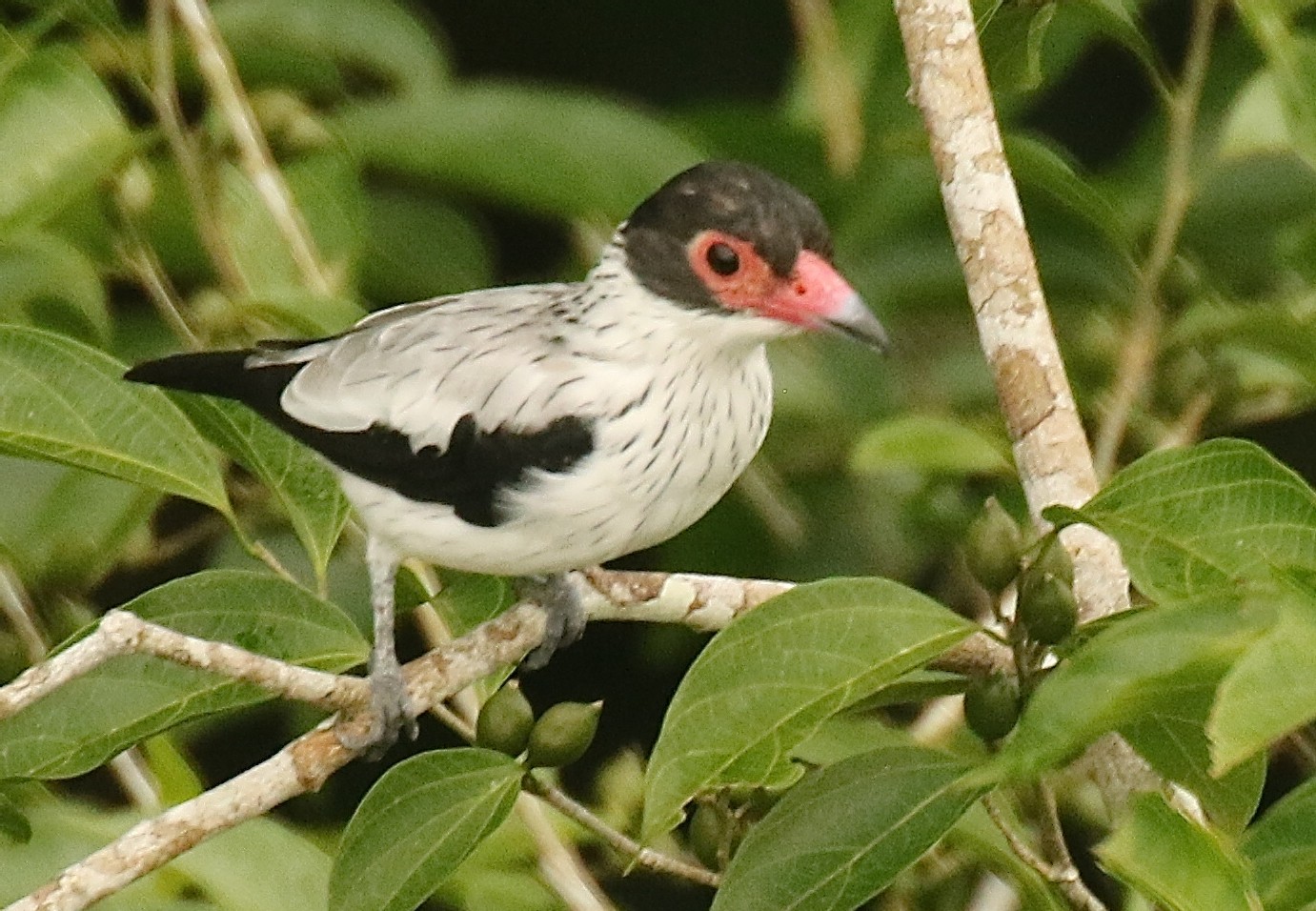Black-tailed Tityra
A species of Tityras Scientific name : Tityra cayana Genus : Tityras
Black-tailed Tityra, A species of Tityras
Botanical name: Tityra cayana
Genus: Tityras
Content
Description General Info
 Photo By TonyCastro , used under CC-BY-SA-4.0 /Cropped and compressed from original
Photo By TonyCastro , used under CC-BY-SA-4.0 /Cropped and compressed from original Description
This is a short-tailed robust bird with a long hook-tipped bill; like other tityras it has a peculiar vestigial ninth primary feather. The adult black-tailed tityra is about 20–22 centimetres (7.9–8.7 in) long and weighs about 60–70 grams (2.1–2.5 oz). The male is dull white above and white below. The rectrices, the primary and secondary remiges and a cap extending to below the eyes are black; the tertiary remiges are silvery grey. Females have dark brown rather than black on wings and tail and some brown pattern on head, back and underside. In both sexes there is a patch of rosy-red bare skin around the eye, extending to the bill which is red-based with a black tip. The iris and feet are dark. The juvenile plumage is unknown. 
Size
22 cm
Nest Placement
Cavity
Habitat
The black-tailed Tityra occupies habitats like forest edges, secondary growth forests, and plantation shade tree areas, thriving at lower elevations below 500 meters. They are common in broader regions with ecosystems including the Pantanal and the Cerrado as well as Terra Firme and Várzea forests. While typically found below 700 meters, this species may be spotted up to 1,100 meters in hilly areas.
Dite type
Frugivorous
General Info
Feeding Habits
Bird food type

Fruit
Behavior
Black-tailed tityras are most commonly seen in pairs, or, less frequently, single or in small groups; they are intolerant of other birds and will try to chase them away. They are often seen perched conspicuosly as they feed on medium-sized fruits. Food is gleaned from vegetation or picked off in mid-hover. While some large insects are caught, these are mainly fed to young birds; adults are predominantly frugivores and locally important dispersers of such species as the Meliaceae Cabralea canjerana. This species rarely attends mixed-species feeding flocks even when provisioning young, preferring to forage for insects on its own high up in the trees. Its main breeding season appears to be from November to March across its range, but occasional nesting birds can be encountered almost year-round at least in some regions. For example, in the lowlands of Colombia and Ecuador, breeding activity has been reported in June and July also, suggesting either lack of a distinct breeding season and/or that two broods may be raised per year. The nest is several meters above ground in a tree hole, such as an old woodpecker nest or the crown of a dead palm tree. The brown-marked buff eggs are laid in a bed of dry leaves and some small twigs. Three eggs are considered likely, but exact clutch size is uncertain. Only the female incubates for almost three weeks until the young hatch, but both parents feed the chicks. Fledging is believed to take at least 3 weeks, perhaps as much as one month. This species is one of the many hosts of the brood parasitic shiny cowbird (Molothrus bonariensis). It is not uncommon across its large range and occurs in many national parks and other protected areas. Therefore, it is considered a species of least concern by the IUCN. 
Distribution Area
This bird is found as a year-round resident in forest edges, second growth and plantation shade trees in the pantanal and cerrado as well as in terra firme and várzea forest, usually below 500 metres (1,600 ft) but occasionally as far up as 1,100 metres (3,600 ft) ASL. 
Species Status
Not globally threatened.
Scientific Classification
Phylum
Chordates Class
Birds Order
Perching birds Family
Cotingas Genus
Tityras Species
Black-tailed Tityra